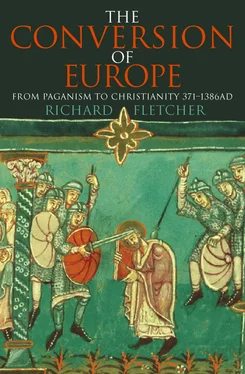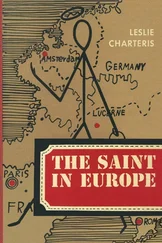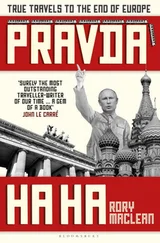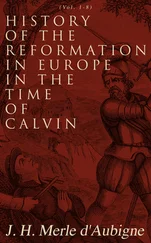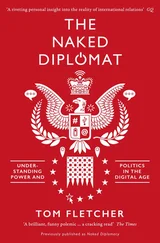Then there is the question of cultural attitudes. The educated and articulate elite of the classical Mediterranean believed that civilization and culture were to be found exclusively in cities. Our daily use of such words as ‘urbane’, ‘polite’ and, of course, ‘civilized’ shows what a good job that elite has done in persuading posterity of its point of view. Occasionally the writers who belonged to this tiny elite deigned to celebrate country life and the happy lot of the peasantry – their rude health, sturdy virtues and innocent pleasures. Reality was different. City-dwellers, parasitic upon the surrounding country for their essential supplies, repaid this dependence in the harsh coin of disdain. Most townspeople, most of the time, looked upon the rural peasantry with mingled disgust, fear and contempt. They were dirty and smelly, unkempt, inarticulate, uncouth, misshapen by toil, living in conditions of unbelievable squalor, as brutish as the beasts they tended. These attitudes are easy to document from surviving Greek and Latin literature. The peasantry of the countryside were beyond the pale, a tribe apart, outsiders. Such attitudes underpinned the failure of the urban Christian communities to reach out and spread the gospel in the countryside. We might regard this lack of initiative as negligent. But such an accusation would probably have bewildered the urban Christians. For them the countryside simply did not exist as a zone for missionary enterprise. After all, there was nothing in the New Testament about spreading the Word to the beasts of the field.
Unappealing as we might find this disposition of antique citydwellers, it was one which witnessed to a massive confidence in the urban order of imperial Rome. The Christian communities of the Mediterranean world had grown up in that order, if not quite of it. They took it for granted and they were right to be confident in it. From the beginning of the Christian era in the reign of Augustus for the next two centuries the Mediterranean (as opposed to the frontier) provinces of the empire had basked in almost uninterrupted peace and prosperity: the pax romana. The public buildings of the cities and the speeches which were declaimed in them alike display a bland and soothing mastery of their respective architectural and literary techniques; symptomatic of a social order which gazed upon its way of going about its business and was pleased with what it saw. Look at me, the colonnades and arches of Leptis Magna seem to say: relax; enjoy; and it’ll go on like this for ever.
But it didn’t. In the middle years of the third century the Roman empire experienced a phase of trouble more harrowing and profound than any that had occurred since the founding of the principate by Augustus. During the half-century which followed the death of the Emperor Severus Alexander in 235 there ensued a series of short-lived and for the most part incompetent rulers. Of twenty more or less legitimate emperors – not counting usurpers – all but two died violently. The average length of reign was two years and six months. A symptom, and perhaps to a large degree a cause of this instability was the inability of government to hold the allegiance of the armies. This played into the hands of the generals, who used the troops under their command to stage coups which made and unmade emperors or to set up breakaway ‘empires within the empire’. As central control slackened, imperial income fell. To make ends meet, and in particular to try to satisfy the insatiable demands of the military and thus to purchase loyalty, the government resorted time after time to that most irresponsible of expedients, debasement of the coinage. Debasement brought in its train, as it always does, inflation. By the end of the third century the purchasing power of the denarius stood at about a half of 1 per cent of what it had been at its outset.
Crippled by instability, civil war, fiscal chaos – and, just to make matters worse, by intermittent outbreaks of bubonic plague – the empire was in no position to defend its frontiers. From 224 onwards the new Persian dynasty of the Sassanids constituted a well-organized and hostile presence to the east, bent upon regaining the Syrian territories which Persian kings of old had ruled. For the Roman empire, the most humiliating moment of this time of troubles occurred in 260 when the Emperor Valerian was captured by the Persians. The Germanic tribes of the Goths, settled at this period on the northern shores of the Black Sea in today’s Ukraine, took to the sea to strike deep into Asia Minor. By land, they pressed hard on the Danube frontier, launching raids into the Balkans and Greece. The Emperor Decius was defeated and killed by them in Thrace in the year 251. Along the Rhine frontier new Germanic confederations, those of the Alamans and of the Franks, took shape. In 257 they broke into Gaul to plunder it at will. Some of them even penetrated as far as northeastern Spain, where they sacked the city of Tarraco (Tarragona). Berbers along the Saharan fringes attacked the long, thin, vulnerable littoral of Roman north Africa. In far-flung Britain the construction of coastal defences witnessed to new enemies from overseas – Saxons from Germany and Scots from Ireland. One of the most telling signs of the times was the building of town walls throughout the western provinces of Gaul, Spain and Britain, furnishing defences for settlements which had never needed them before.
The third-century slide into anarchy and helplessness was arrested by the Emperor Diocletian (284–305). His stabilizing reforms, fiscal, military and bureaucratic, were continued and extended under his successor Constantine I (306–37). Their work gave the empire the stamina and solidity it enjoyed in the fourth century. One feature of these reforms was the adoption of ideas about monarchy, together with the associated ceremonies and ritual, which drew on earlier Hellenistic and Persian thinking. The principal tendency of this body of political theory was to stress the power of the ruler in matters sacred as well as profane. It would encourage the moving together of church and state and, as time went by, their near merging in the imperial theocracies of the East Roman or Byzantine empire and, much later, in its Russian heir. It was a tendency which was less pronounced in the western provinces of the fourth-century empire. This was a difference which had important implications, to which we shall return shortly. A second feature was the division of the unitary empire into two halves, an eastern and a western. Diocletian had led the way here, dividing the empire into a tetrarchy – a senior emperor in east and west, each with a subordinate emperor – as part of his reforms; a decentralization intended to make more effective the emperors’ discharge of their primary responsibility, defence. This formal structure was not maintained after his death and practice varied in the course of the fourth century, but by its last quarter the political division into eastern and western empires had become permanent. One development which helped to institutionalize it was Constantine’s foundation of a new capital city in the east, named after him – Constantinople.
A third feature of the reforms of the Diocletianic-Constantinian period was the change in the status of Christianity within the empire. Towards the end of Diocletian’s reign there occurred the last and most serious persecution of the Christian communities ever mounted by the imperial authorities. It was immediately halted by a respite. The story of Constantine’s conversion is well known but needs to be told again in outline here because it became such a potent model – indeed, a topos – of how a ruler should be brought to the faith. Constantine had been proclaimed emperor in Britain in 306. Six years later, having by then made himself master of Gaul and Spain as well, the emperor was leading his army south to do battle with his rival Maxentius for control of Italy and Africa. At some point in the course of this journey – much later tradition would locate this at Arles – Constantine saw a vision of the cross superimposed on the sun above the words In hoc signo vince , ‘Conquer in this sign’. He advanced over the Alps and down towards Rome. His troops were ordered to mark their shields with the sign of the cross. In the battle of the Milvian Bridge, just outside Rome, Constantine was victorious against all odds. The Christian God – a god of battles – had been on his side. A few months later, in March 313, the so-called Edict of Milan put an end to the persecution of the Christians.
Читать дальше
